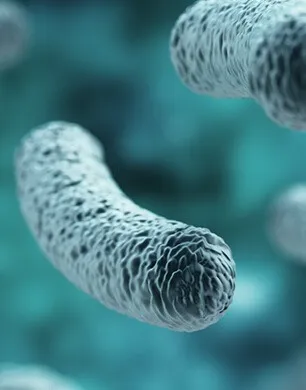Why Gut Flora is Important in Kids?
Why Gut Flora is Important in Kids?
For those who think bacteria is only of the bad kind, think again. In our gut thrives an ecosystem of bacteria that is very important for our health, especially your baby’s. This is called gut flora.
.webp)
What is gut flora and what are its three types?
Beneficial gut flora
-
that helps us digest and absorb food, and produce chemicals that kill viruses, bad bacteria and fungi.This kind also increases immunity.
Opportunistic gut flora
-
that can cause disease when they are not managed. This is also known as bad bacteria.
Transitional gut flora
-
that are present in our food. If the GI tract is healthy, they pass through without causing any harm. Our age, health and diet affect the amount and type of flora in each part of the gut.
So why is gut flora important?
Here’s some food for thought. About 70% of our immunity lies in our gut.* It is therefore safe to say that that healthy flora increases immunity. That’s just an overarching reason as to why our gut needs to be in prime health. What really does the gut do?
Digestion
Of course, we all know this. The microbiota in our gut breaks down various food compounds (fibre, amino acids, etc.), which are fermented, producing gases and fatty acids which act as nutrients for intestinal cells.
Boost Immune System
Our gut flora plays a huge role in being natural defences against pathogenic microbes. These pathogenic microbes can produce toxins which can be broken down or absorbed by the microbiota. This is also called the "barrier effect".
Metabolism
The microbiota plays a role in the absorption of carbohydrates and fatty acids, storage of fats and regulation of our appetite. The microbiota produces the same neurotransmitters as the brain and it relays communication between the brain and intestine.
What contributes to a child’s gut flora?
One is at the earliest imaginable stage- the birthing process. That’s where his contact with maternal vaginal bacterial flora influences his microbial composition. Gut flora importance for children cannot be stressed enough.
If the birth is caesarean, this process does not take place and the composition of the microflora is different, less rich in lactobacilli (a kind of good bacteria).
Breast feeding plays a role in the presence of gut flora too. It stimulates the growth of bifidobacteria (a kind of good bacteria), which artificial feeding doesn’t do as much.
With age, a few things affect the balance of gut flora in your child, like:
Intestinal infections like Diarrhoea
Sometimes, the production and spread of viruses or bacteria cause inflammations and affect the stomach or intestine.
Antibiotic therapy
Antibiotic diarrhoea is particularly common in children and is reported in up to 20-25% of cases.
Food and climate
Change in food or an unhealthy diet. Seasonal changes also affect the balance of the gut flora, often causing diarrhoea and stomach ache .
Food intolerance
Metabolic defects prevent a child from digesting food, which results in swelling, constipation or diarrhoea, abdominal pain, bloating.
Teething
Who would have thought that teething can can disrupt the gut flora? With abundant salivation, swelling and redness of the gums, restlessness and lack of appetite, teething can be accompanied by some line of fever or diarrhoea.
.webp)
